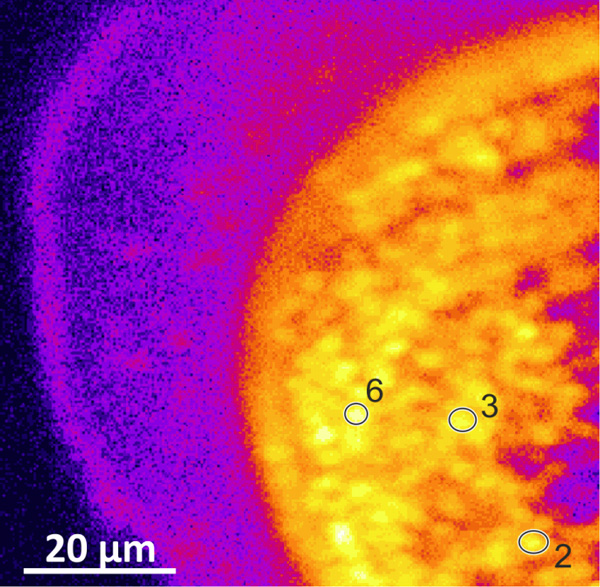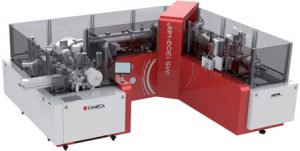Geochronology with LG-SIMS at the Swedish Museum of Natural History
The Swedish Museum of Natural History used SIMS to determine that rock samples from India were formed around 1,850 million years ago. Previously it was thought that accurate geochronology wasn’t possible for this type of sample!
Blue Scientific is the official distributor for CAMECA SIMS instruments in the UK and Nordic region (Norway, Sweden, Denmark, Finland and Iceland). For more information or quotes, please get in touch.
More articles about geoscience
CAMECA LG-SIMS
Contact us on +44 (0)1223 422 269 or info@blue-scientific.com
SIMS at The Swedish Museum of Natural History
The Swedish Museum of Natural History has been equipped with a Large Geometry SIMS since 1997, in its NordSIMS laboratory. It’s used for international research projects in geochronology, cosmochemistry, geobiology, ecology, nuclear safeguarding and more.
SIMS (Secondary Ion Mass Spectrometry) is the most sensitive elemental and isotopic surface microanalysis technique. It can be used to analyse bulk composition and in-depth distribution of trace elements:
- High sensitivity to all elements from Hydrogen to Uranium and above.
- Detection limits down to ppb level for many elements.
- High lateral resolution imaging down to 40 nm.
- Very low background for high dynamic range (>5 decades).

Challenging Samples
A recent study by Prof. Martin Whitehouse and his team at the Department of Geosciences at the Swedish Museum of Natural History involved zircon crystallites found in samples from southern India. During U-Th-Pb dating, tiny, anomalous patches of lead made geochronological data interpretation problematic. Previously it was believed that accurate age determination wasn’t possible for these types of samples.

A New Technique
Detailed LG SIMS analysis was performed on the challenging samples, including spot analysis of individual grains, rare earth element measurements and Scanning Ion Imaging (SII).
After leaving the LG-SIMS running overnight, the researchers realised that the patches of lead appeared and disappeared over various depths. Prof. Whitehouse describes the moment of discovery: “We saw things coming and going on that scale, and realised: these things must be tens of nanometers in size, not much bigger. That was a real revelation!”
The instrument’s depth resolution is around 10 nm. Using a new method, successive SII scans were stacked to construct lead depth profiles with nm-scale resolution. They called the new technique “Scanning Ion Tomography”.
Advantages of LG-SIMS
LG-SIMS is unmatched for high-precision quantification of elemental and isotopic concentrations such as zircon U-Th-Pb. This sensitivity comes from its large-radius magnetic sector, which delivers optimal transmission at high mass resolution. The lateral resolution down to 1-2 microns enables in-situ analysis of individual grains and even sub-grain domains. Features at this scale can’t be resolved with bulk or large-spot analytical methods such as laser ablation ICP-MS.
- In-situ microscale isotopic and elemental analysis.
- High sensitivity at high mass resolution.
- High precision for isotopic ratios (down to tenth-permil level).
- Multi-collection capability for high throughput.
- Flexible and versatile: spot analysis, ion imaging, depth profiling and more.
We always have more users than running time. We’re a worldwide operation: currently we have projects with people in Scandinavia, Australia, the U.S., Brazil. Geochronology and cosmochemistry dominate, followed by geobiology, ecology, and nuclear safeguards applications. Over 24 years, that instrument has generated data for 670 papers so far! A lot of those projects would be impossible without it; of course, my own research has evolved around the LG-SIMS.
Prof. Martin Whitehouse, Swedish Museum of Natural History
The Results
The unique imaging and depth profiling capabilities of the CAMECA ion microprobe enabled the team to reliably determine that the Indian zircons were formed around 1,850 million years ago (Ma). Subsequent ultra-high-temperature metamorphisms took place at 570 and 520-510 Ma.
Full details of the study are available in a pdf from CAMECA.

CAMECA IMS 1300-HR³
Large Geometry SIMS for Geoscience
- Track geological processes using stable isotopes.
- Geochronology for dating minerals.
- Trace element detection / distribution.
- Locate and measure uranium particles for nuclear safeguarding.
- Automated features and remote operation.
The IMS 1300-HR³ is the current model of the LG-SIMS used at the museum, which since its installation in 1997 has been upgraded to include many of the same features.
More Information
Blue Scientific is the official distributor of CAMECA systems in the UK and Nordic region. We’re available to answer all your questions – just get in touch:


